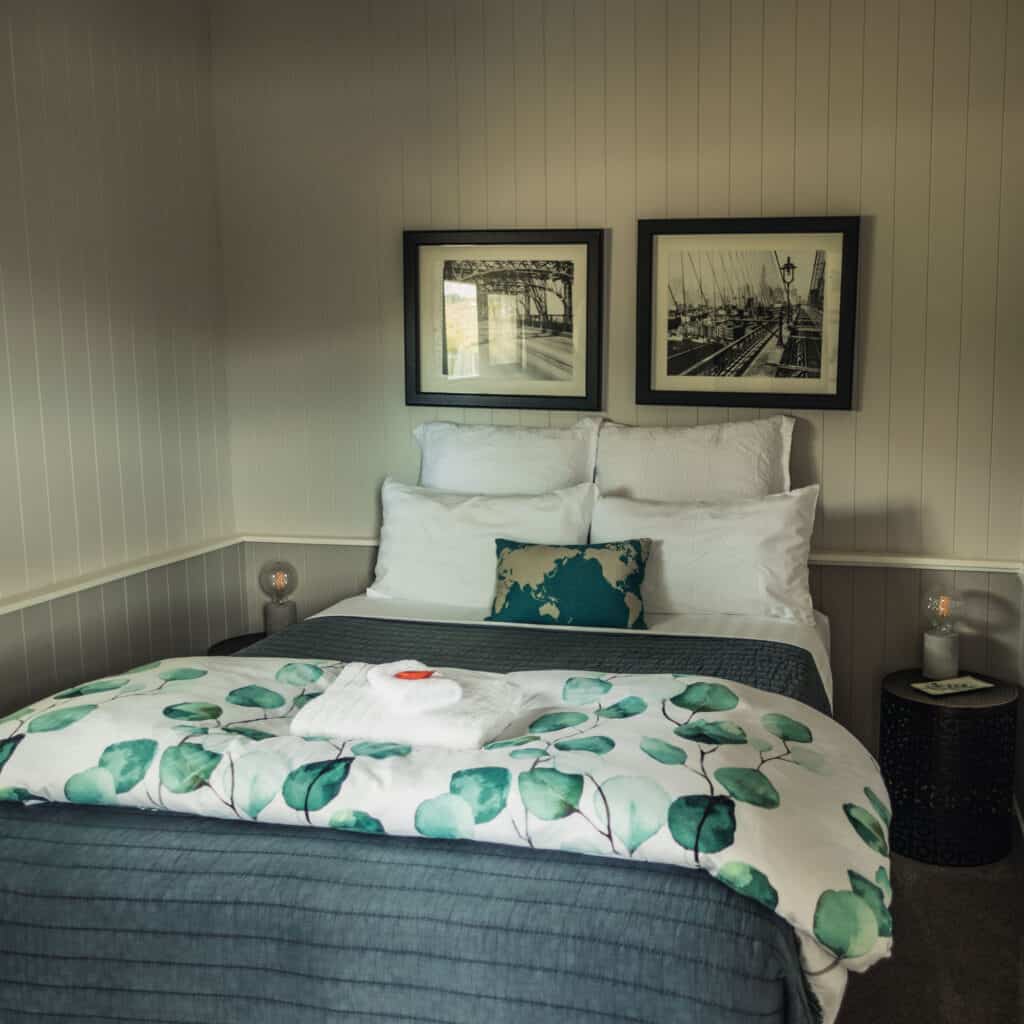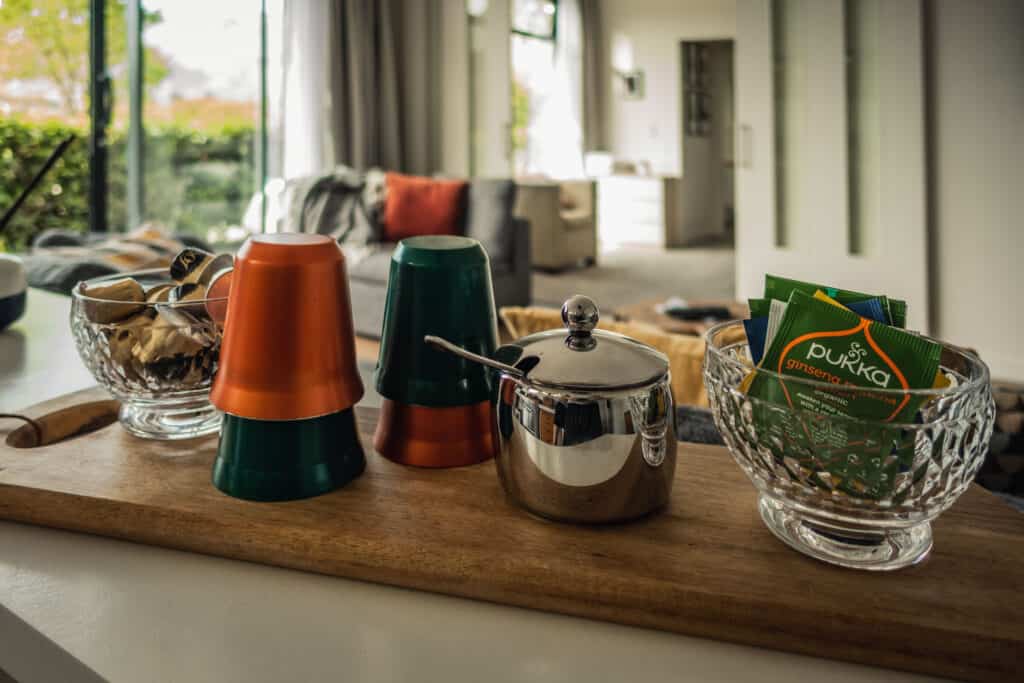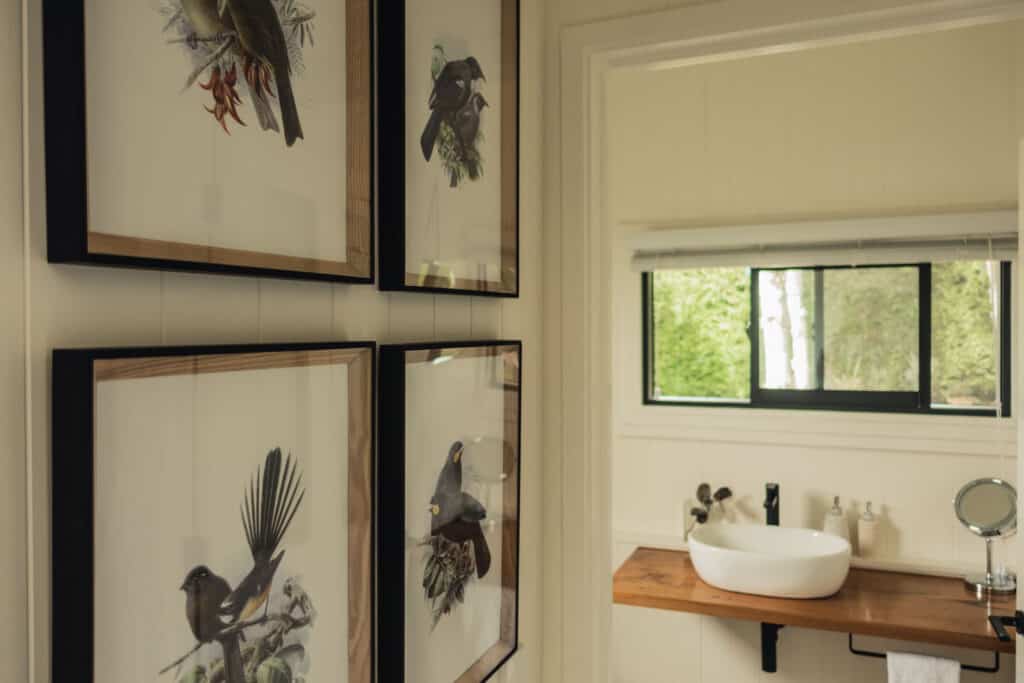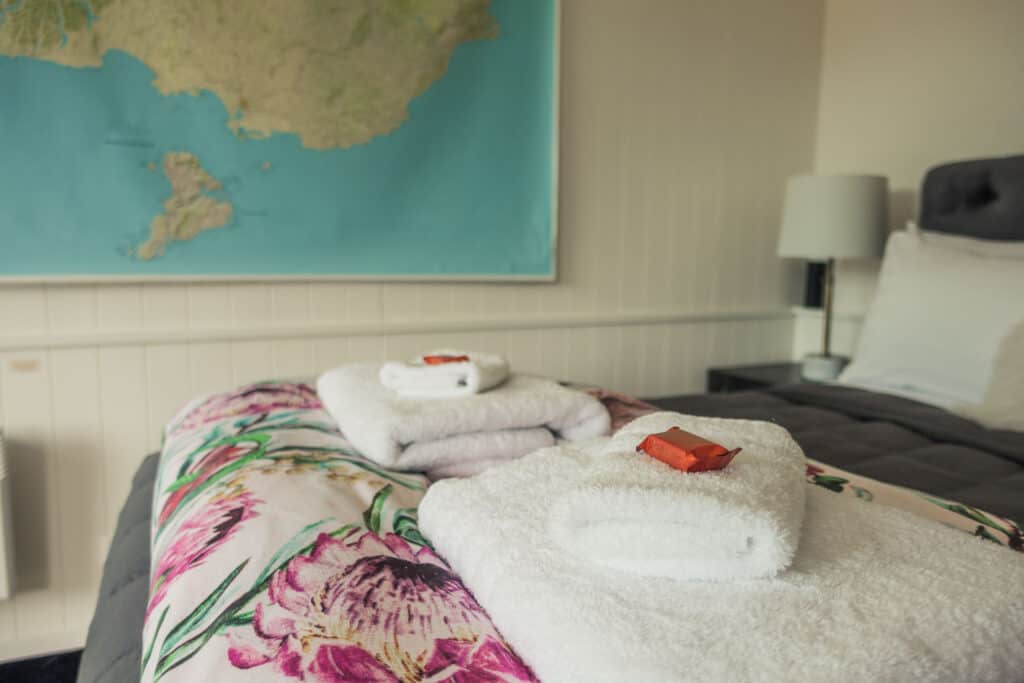Hike, walk, cycle | Queenstown | New Zealand
Discover the best hikes, walks and cycle trails in Queenstown
Text | Anninka Kraus
Photography | Tobias Kraus

New Zealand Otago
Sitting on the edge of Lake Wakatipu, Queenstown sells its natural beauty – the country’s most sublime scenery of a crystal-clear lake set against the backdrop of soaring snow-capped mountains – like no other tourist destination in New Zealand.
And Queenstown sells it well. In 2019, that scenery lured more than three million visitors to a town with a resident population of barely 30’000.
The self-proclaimed adventure capital of the world and its offer of over 200 adventure tourism activities has proven an irresistible draw for years. Until New Zealand closed its borders to a Covid-ravaged world and the tourism industry in the country’s throbbing and buzzing adventure hotspot came to a grinding halt.
On our visit in 2021, Queenstown was deserted. Apart from its ballooning size (I was astonished to see how rapidly new developments had advanced along the lakeshore in the past five years), the town bore a striking resemblance to its former twenty-year younger self. That’s when I first visited and was immediately taken with this small lakeside community that was then much like Wanaka is today (still): laid-back, unpretentious, outdoorsy, and naively unaware of its charms.
The noise that I had come to associate with Queenstown in recent years, from the likes of jet boats and other watercraft, helicopters, airplanes, cars, parties, and backcountry 4-wheel drives had been silenced. And amidst all the worry about a struggling tourism industry, calls became louder demanding a change to make tourism less environmentally harmful after Covid.
jump ahead
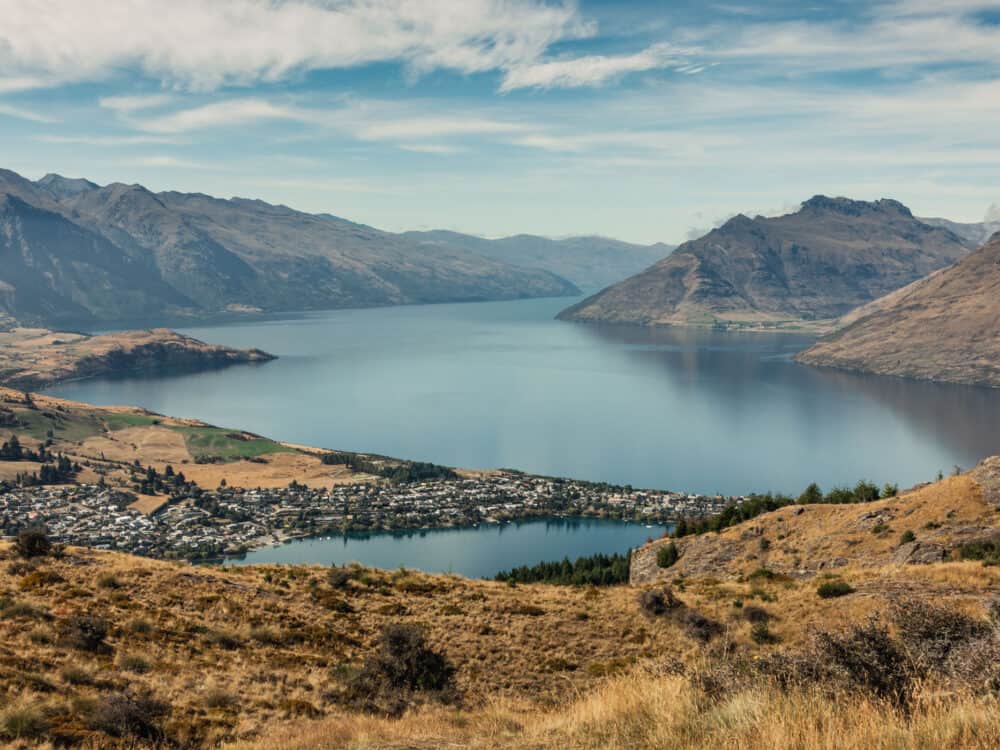

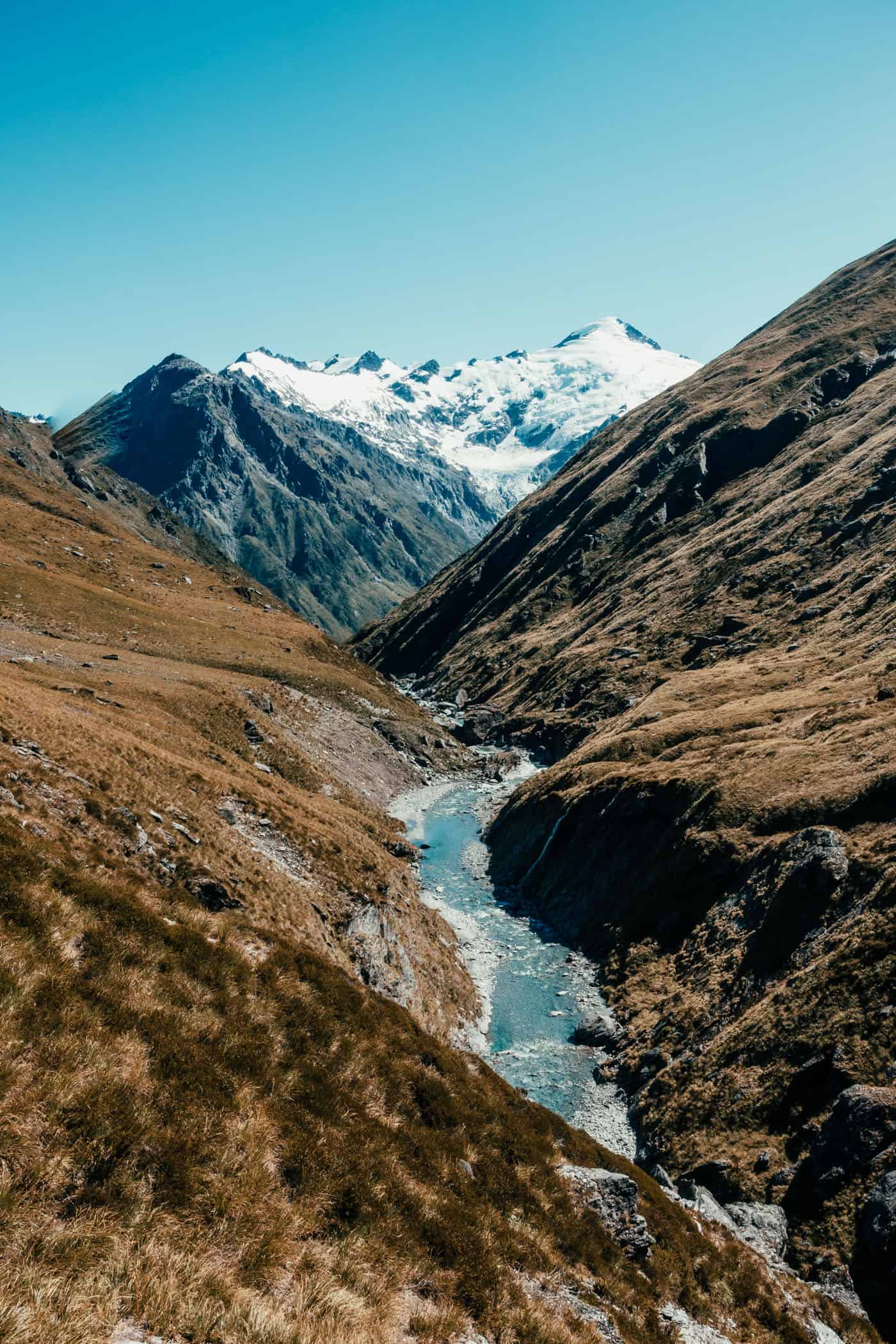
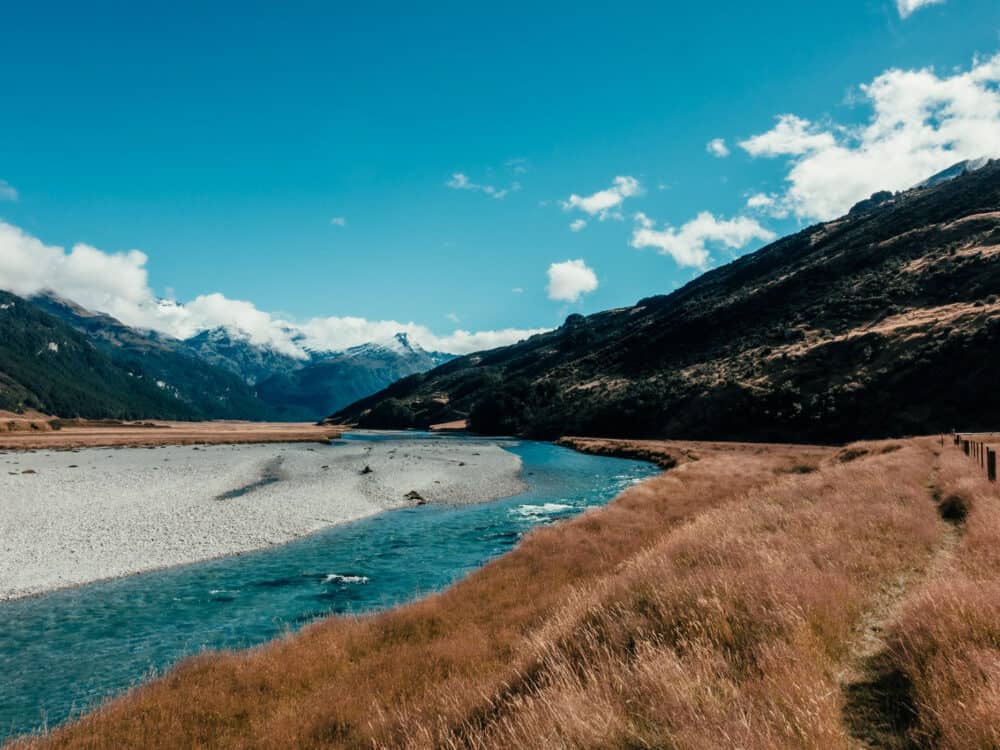

The Rees-Dart Track following the turquoise Dart River in Mt Aspiring National Park.
what to expect.
Queenstown sits on the shores of Lake Wakatipu against the backdrop of the snow-covered Southern Alps and boasts the country’s most spectacular lake and mountain scenery
The self-proclaimed adventure capital of the world, Queenstown lives up to its promise with famous long-distance hiking trails (such as the Rees-Dart and Routeburn tracks) on its doorstep, shorter walks starting right in the city centre, a plethora of adrenaline-fueled adventures (bungee jumping – this is the home of bungee jumping – skydiving, jet boating, skiing to name just a few of more than 200 activities on offer), and 130 kilometres of off-road cycling trails criss-crossing the Wakatipu Basin
The Queenstown Trail is the most popular of New Zealand’s 22 Great Rides and links Queenstown, the Gibbston, Valley, Jacks Point, and historic Arrowtown
There’s plenty to keep the less adventurous busy too: ride up to 480m Bob’s Peak in the iconic Skyline Gondola for panoramic views across Lake Wakatipu and The Remarkables, then cruise across the lake on board the TSS Earnslaw, a 100-year-old coal-fired steamer, or visit wineries in the Gibbston Valley before soaking in a cedar-lined hot tub with views over the Shotover River at Onsen Retreat & Day Spa and rounding off the day at one of the city’s award-winning restaurants
location & trail information.
Directions: Queenstown is set on the shores of Lake Wakatipu in Central Otago’s Queenstown Lakes District in the south-west of the South Island and is the gateway to hikes in Fiordland and Mount Aspiring national parks. The city is easily accessible by car and Intercity bus from Dunedin (3.5-hour drive) and Invercargill (2.5-hour drive) and served by Air New Zealand with daily flights to Auckland, Wellington, and Christchurch.
When to go: All year | Queenstown has much to offer at any time of the year, but summer (December to February) is the best time for hiking and cycling in the lower South Island.
Where to eat:
Arrowtown: Provisions of Arrowtown , Queenstown: Rātā, Botswana Butchery, Fergsburger – excellent burgers and bakery, Vudu Cafe & Larder, Bespoke Kitchen , Gibbston: Gibbston Valley Lodge and Spa Kinross, Peregrine Wines, Bald Hills, Gate 20 Two, Te Kano Estate, Mt Difficulty, Terra Sancta , Lake Hayes: Amisfield Restaurant | open for lunch and dinner Wednesday – Sunday
How to get around: everything in Queenstown is within walking distance and public transport connects the city to surrounding towns and the airport (buses leave to and from the airport every 15 minutes)
In the newfound quiet, these calls were possibly heard more clearly than before and capitalized on the growing awareness of the negative impacts of overtourism on the country’s natural environment and precious ecosystems. In a post-Covid world, New Zealand tourism will be more sustainable and cater to wealthy visitors the government has announced.
If sustainability is a prerequisite for the tourism activities allowed in the future, then what I wonder will happen to heli-skiing, jet boating, scenic flights, skydiving, and quad biking?
Will the iconic TSS Earnslaw still fit the bill and send puffs of black smoke into the sky and the smell of burning coal to linger over the lakeshore? Launched in 1912, the same year as the Titanic, the steamer still ferries passengers across the lake. And still, it operates on coal and is in fact the only remaining coal-fired, commercial passenger-carrying steamship still operating in the southern hemisphere. I imagine even the Alps 2 Ocean Cycle Trail will have to change. Advertised as the grandest of New Zealand’s Great Rides the 300km trail requires a helicopter flight over the Tasman River a mere 8 kilometres from the starting point to continue with the journey.
We met with a tourism operator in Queenstown who in principle agreed with this new focus but was shocked by what she believed to be the government’s intentional obliteration of thousands of small businesses to “clean up the industry”. She also pointed out how at odds the sustainable approach was with the government’s announcement to focus tourism on the super-wealthy (low-volume, high-value tourism is also the approach in Bhutan) and I tend to agree with her. The most expensive tourism activities are often the most environmentally damaging and no low-value tourist requires a private aircraft to fly to New Zealand nor a helicopter flight to reach Minaret Station. Foreign freedom campers have been blamed for shameful and disrespectful behaviour for years, often rightly so. Yet in the absence of international tourists, New Zealanders have proven to behave no better in their own backyard and were in fact called on to “‘See your own back yard’ – just don’t poo in it”.
Queenstown’s advance to one of New Zealand’s favourite holiday destinations has been a long time in the making. The city’s early history mirrors that of other towns in Otago: British settlers, sheep farmers, were the first Europeans to arrive on the scene but swamped with thousands of miners camped in shantytowns along the riverbank when gold was discovered in the Shotover River in 1862. Paddle steamers provided transport on Lake Wakatipu (elsewhere they built railways, in Central Otago for instance) like the 1912 TSS Earnslaw which is still in service today.
When all gold deposits had been exhausted, miners left for new fields on the West Coast and by 1900 the population had dwindled to 200. It was decades later, in the 1950s, that Queenstown developed into one of New Zealand’s most popular holiday destinations and started popularising extreme sports like commercial bungee jumping. Since then, tourism has been Queenstown’s mainstay and the number of visitors to Queenstown increased rapidly, from 200,000 in 1974 to 3.3 million in 2019.
Only recently that dependency became a challenge. There’s been much talk of “sustainability” and almost every business or accommodation provider claims it, in the belief that eco-friendly soap in refillable pump bottles will mitigate the impact that three million annual guests have on a little lakeside town; or that the use of recycling bins and encouraging “customers to take their photos and videos digitally on their phones rather than a physical USB” justifies “burning through petrol and on the lake” with a semi-submersible watercraft speeding across the water at 80km/h.
I think it’s reasonable to expect that New Zealand will allow fewer tourists into the country post-Covid and that fewer tourists will put less strain on the environment. But which way the scales will tip in this new era of travel – in favour of the environment or tourism revenue – remains to be seen. I’m not saying they’re mutually exclusive but I’m also not expecting to see millionaires on Intercity busses or in DOC backcountry huts anytime soon.
Hike | Point-to-point trail | 3-5 days
Rees-Dart Track
Hike | Point-to-point trail | 3 days
Routeburn Track
The 3-day Routeburn Track is one of New Zealand’s Great Walks and traverses two national parks, Fiordland and Mount Aspiring. Short of the ocean, barren dessert, or volcanic landscapes and eternal ice, the Routeburn boasts every kind of breathtaking scenery.
Walk | Loop trail | 1-2 hours
Glenorchy Lagoon Walkway
As the name suggests, the Glenorchy Lagoon Walkway makes for a leisurely stroll through the wetlands north of Glenorchy rather than one of the challenging hikes that this area is particularly renowned for. Yet although there’s little physical endurance required of you on this flat, well-graded walkway, the views across the lagoon towards Mount Earnslaw/Pikirakatahi are impressive.
The trail starts at the car park at the end of Mull Street and meanders along the waterfront of Lake Wakatipu to the Glenorchy Lagoon and the start of long boardwalk sections that venture into the natural habitat of native wetland birds and offer unique birdwatching opportunities. There are two loop tracks, a shorter one and a longer extension to the first, drawing a figure of eight on the pale brown tussock-covered grasslands surrounding the lagoon.
The lagoon is also commonly referred to as Mirror Lakes and on a calm day, you’ll see the snow-capped mountain ranges vis-a-vis reflected perfectly in the still waters. Both, the short and long loop trail lead back to the car park on Mull Street with one of Glenorchy’s best cafes, The Trading Post, just up the road. Another great place to stop for coffee is Mrs Woolly’s General Store on Oban Street.
track details.
Start/End: car park at the end of Mull Street near Lake Wakatipu in Glenorchy
Directions: from Queenstown, follow Glenorchy-Queenstown Road to Glenorchy, which turns into Oban Street, then turn left into Mull Street just before the golf club. The track is signposted from the car park near Lake Wakatipu at the end of Mull Street.
Distance: 5km for the long loop
Time: 1-2 hours
Elevation gain: – (lowest point: 316m / highest point: 324m)
Difficulty: very easy – much of the walkway is on boardwalk
Best time to walk: all year
Permits: none required
Options: suitable for running
Further information: Official DOC information




Hike | Out & back trail | 6-8 hours
Ben Lomond Track
The Ben Lomond Track is a demanding full-day hike with a 1438m elevation gain and magnificent 360-degree views over Lake Wakatipu, Queenstown, The Remarkables range, and Mt Aspiring.
Hike | Loop trail | 1.5-2.5 hours
Queenstown Hill Time Walk
Walk | Loop trail | 1:15 hours
Bobs Cove Track
The 3.6km, 75 minutes loop track at Bobs Cove traces the lakeshore of a gorgeous little bay onto a narrow peninsula before climbing to a lookout point with panoramic views over the lake and mountains.
The track is well signposted from the trailhead, a car park on Glenorchy–Queenstown Road, 14km from Queenstown, and disappears into beautiful native bush right away. Follow the trail in the direction of “via loop track” until the walkway spills onto a magical little beach in Bobs Cove.
The turquoise water, palms, and great swimming spots on the beach almost give the impression of a subtropical island rather than a Central Otago lakeshore and make for a beautiful destination even without the hike. It’s a lovely spot, in any case, to have named after oneself – Bob Fortune, in this instance, the commander of a lake boat for the founder of Queenstown, William G. Rees, the founder of Queenstown.
On a weekday with the borders closed this stunning spot so close to Queenstown was eerily quiet. As the track skirts the lakeshore, it passes by a historic lime kiln and a wooden jetty and ventures out onto a promontory before climbing to the lookout and Picnic Point above the cove with views over the turquoise waters of Lake Wakatipu on both sides of the peninsula.
The descent is fairly steep and slippery on loose gravel and easier done in running shoes than in flip-flops.
track details.
Start/End: car park on Glenorchy–Queenstown Road, 14 km from Queenstown
Directions: from Queenstown, follow Glenorchy–Queenstown Road towards Glenorchy for 14 kilometres to a car park by the side of the road
Distance: 3.6km
Time: 1:15 hours
Elevation gain: 65 meters (+/-) (lowest point: 315m / highest point: 360m)
Difficulty: easy
Best time to walk: all year
Permits: none required
Options: the track is also suitable for running | Bob’s Cove Track connects to the Twelve Mile Delta Track that follows the shore of Lake Wakatipu
Further information: Official DOC information




Walk | Loop trail | 2-3 hours
Lake Hayes Walkway
The Lake Hayes Walkway is another leisurely trail in the Queenstown area suitable for walking, running, and cycling and offers a few moments reprieve from the bustle of Queenstown in the beautiful lakeside scenery of the Wakatipu Basin. The 8km loop trail is well-maintained with no notable ups and downs but does narrow in places with tight corners and steep drop-offs as it follows the lakeshore. If you’re cycling the Queenstown Trail you can access the Lake Hayes circuit from the Countryside and Twin Rivers trails.
Starting from Lake Hayes Lookout or the trailhead at the end of Rutherford Road, the track climbs slightly in elevation as it runs along the western lakeshore before it drops down to the shore again and a beautiful boardwalk section at the southern end of the lake. Returning along the eastern side, the trail passes below impressive mansions sitting on the clifftop just above the walkway and to the left a string of small secluded coves. On a calm day when the surrounding mountains are perfectly mirrored in the smooth water the lake lives up to its nickname, “Mirror Lake”.
Having completed the loop, you’re already in the right place to sample some of the area’s finest wines and foods at the award-winning Amisfield Winery and Restaurant or Akurua Winery.
track details.
Start/End: this is a loop trail with several access points, like Lake Hayes Scenic Reserve, Lake Hayes Pavilion, or at end of Rutherford Road
Directions: Lakes Hayes is a 20-minute drive from Queenstown – follow SH 6 towards Gibbston and turn left into Arrowtown-Lake Hayes Road. Turn left again into Lake Hayes Scenic Reserve when you’ve almost reached the end of the lake and continue until you reach a large grass area in front of the lake where you can park.
The easiest way to get to the track is by car, but public transport is also an option – take number 2 bus heading for Arrowtown and get off at the Amisfield Winery stop.
Distance: 8km
Time: 2-3 hours
Elevation gain: 65 meters (+/-) (lowest point: 335m / highest point: 370m)
Difficulty: easy
Best time to walk: all year
Permits: none required
Options: suitable for running and mountain biking (Grade 2)
Further information: Official DOC information




Walk | Loop trail | 2-3 hours
Moke Lake Loop Track
Cycle | Point-to-point & loop trails | 3-4 days
The Queenstown Trail Great Ride
Walk | Out & back trail | 1-2 hours
Lake Alta Track
I’m not entirely sure why the track to Lake Alta, a glacial cirque in The Remarkables mountain range at 1800m is frequently described as one of Queenstown’s best hikes, but I believe the popularity is owed to the small lake representing Dimrill Dale in Lord of the Rings. The 2km track itself is rather unremarkable.
The location of the lake at the foot of 2319m Double Cone is beautiful however and the drive to the trailhead at The Remarkables ski field is an adventure in itself. Especially when everything is settled under a heavy morning mist as it was on the unseasonably cold February morning when we visited.
The road that clings precariously to the steep hillside as it swoops along challenging hairpin bends became almost indistinguishable from the heavy wafts of mist and dauntingly steep drop-offs to our left.
I imagine the viewing points we passed along the way offer magnificent views across the Wakatipu Basin on a finer day though.
The trail is well signposted from The Remarkables ski field buildings and follows an access gravel road to the chair lifts until the track cuts across alpine wetlands and arrives at the lake. In this landscape of barren rock, the mesmerizing turquoise-blue water and beautiful reflections of the mountains in the smooth water surface are a stunning sight and we spent some time at the lake’s edge and on the ridge above the northern lakeshore with great views from a more elevated position before retracing our steps to the car park.
track details.
Start/End: Remarkables ski area car park
Directions: from Queenstown, drive south on SH6 and turn left at the turnoff to the Remarkables ski area; follow the road until you arrive at The Remarkables ski field buildings
Distance: 3km return
Time: 1-2 hours return
Elevation gain: 190m (+/-) (lowest point: 1610m / highest point: 1805m)
Difficulty: easy, the trail is well-marked and maintained
Best time to walk: summer (December – February) | the lake freezes over in winter
Permits: none required, but you’ll need to pay a $10 road fee to access the skifield in the summer months
Further information: Official DOC information





